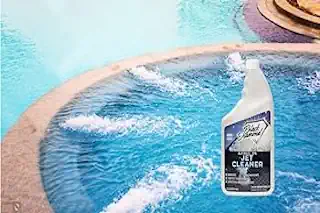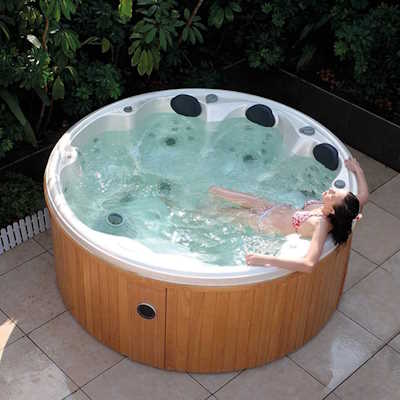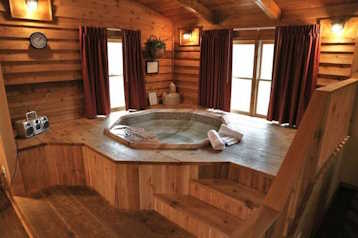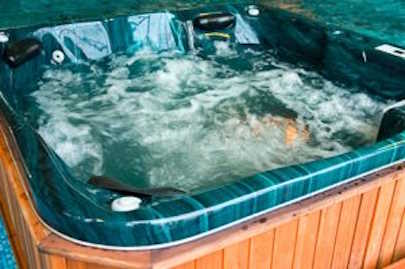Your Guide to Sizing a Hot Tub
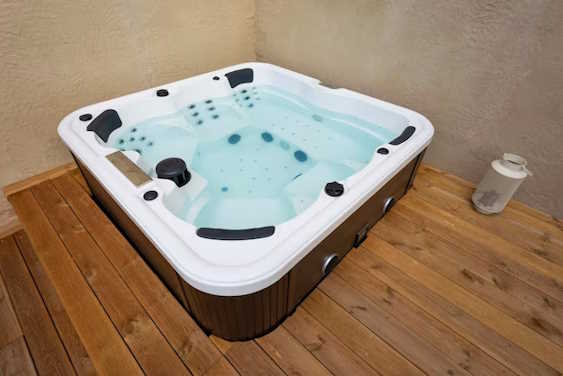
There’s nothing quite like immersing yourself in the warm, bubbling waters of a hot tub. It’s the perfect way to unwind after a long day, or even a luxurious weekend spot for a gathering of friends or family. But before you take the leap and bring a slice of spa life into your backyard or home, one critical decision stands in your way: what size hot tub should you get? Whether you’re a seasoned hot tub enthusiast or a first-time buyer, the size of your hot tub will impact your overall experience more than you might think.
In this guide, we’re not just nudging you towards selecting the right size for your lifestyle; we’re soaking you in everything you need to know to make this investment as warm and worry-free as your future hot tub sessions.
The Importance of Selecting the Right Size Hot Tub
First, ask yourself why you’re getting a hot tub. Is it for solo therapeutic soaks, intimate evenings for two, or for hosting regular poolside parties? The answer to these questions—as well as logistical elements such as space availability and ongoing maintenance—ought to set the tone for your hot tub size selection.
Imagine slipping into your new hot tub, only to find that it feels as cramped as a subway car at rush hour. The sigh of relaxation can quickly turn into a shoulder shrug of discomfort. On the other hand, selecting a unit that’s too large can lead to higher energy bills and a sense of emptiness, rather than intimacy. This is why sizing is so crucial—it’s the Goldilocks principle in action, getting it ‘just right’ for your specific needs and those of your household.
Sizing a hot tub isn’t just about measuring space; it’s about creating a personal oasis that perfectly aligns with your lifestyle, ensuring that your investment provides enduring satisfaction. Read on to explore how to approach this decision with careful consideration and confident understanding.
Considerations for Sizing Your Hot Tub
Space Availability
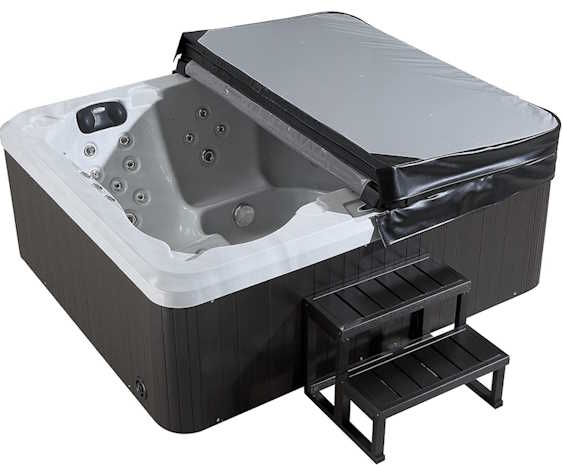
The cardinal rule of hot tub sizing is that it should fit comfortably within the designated space, with enough room for proper installation, access to equipment for maintenance, and adequate ventilation. Keep in mind that the size of the actual hot tub will not just be the typical hot tub dimensions you read on a spec sheet. You should plan for additional space around the tub for these specific purposes. Generally about a foot on all sides for access and use of the cover lifter. Four to six feet overhead for space to climb in and out and gracefully cover the hot tub model you choose.
Number of Users
How many people will be typically enjoying the hot tub together? Hot tub sizes are varied, starting from cozy two-seaters to expansive models that can accommodate a small crowd. If you intend to use the hot tub primarily for personal use or with one other person, a small to medium-sized tub will do. However, if you love to entertain or you have a large family, you might want to consider a larger unit.
Usage Frequency
If you plan to use your hot tub several times a week, you’ll want a larger-sized tub that maintains water quality and heat more effectively, especially if you live in a colder climate. On the other hand, if it’s mostly for occasional use or when you have guests over, a smaller size could work just as well for you.
Benefits of Proper Sizing
Optimal Comfort
Ensuring that there’s enough room for everyone to sit and stretch out comfortably is essential for an enjoyable hot tub experience. Additionally, the right size hot tub will allow for proper buoyancy, soakers are just that, “soaking” rather than contorting to fit into an undersized tub.
Energy Efficiency
Hot tubs are delightful; their effect on your utility bill, not so much. A larger hot tub will inherently use more water and electricity to heat and maintain the correct temperature. However, if you regularly use a smaller tub at or near capacity, it also has to work harder to keep up. This is why when it comes to energy efficiency, correct capacity utilization is key.
Maintenance Ease
The larger the hot tub, the more water you’re dealing with, and that means more chemicals, more frequent water changes, and a greater need for robust filtration and circulation systems. If you’re not ready to take on the maintenance for a larger tub, a smaller model might be a better fit.
Tips for Selecting the Right Size
Measure Space Accurately
Don’t eyeball it. Use a measuring tape to get precise dimensions of your available installation space, and don’t forget to confirm vertical clearance, too. This should include any overhead structures, such as a balcony, which could impede the height of the hot tub.
Consider Future Needs
Your present lifestyle should inform your choice, but it’s also wise to think about potential changes. Will your family grow? Will you host more gatherings in the future? Selecting a size that can accommodate these possibilities is a forward-thinking approach to your purchasing decision.
Consult with Professionals
If you’re uncertain about which size to choose, don’t hesitate to speak with a local dealer or a professional installer. They can consider all the variables you might not have thought of and guide you towards the best option for your space and needs. The delivery process is also very important and should be discussed and understood before you make the purchase. Ground delivery sounds just right for the DIY person but moving a spa is no easy thing to do.
Comparison of Different Sizes
Small Hot Tubs
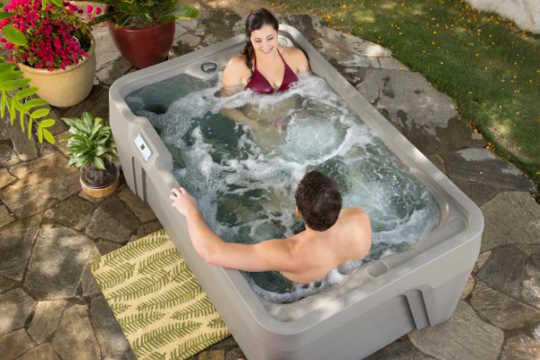
Designed for one to three users, small hot tubs can fit into smaller spaces and are generally more affordable to purchase and operate. They are the perfect hot tub for intimate settings and can be great additions to an outdoor retreat or a small terrace. Keep in mind, while they are cozy, they require more frequent maintenance due to the smaller volumes of water and more limited space for chemical dispersion.
Medium Hot Tubs
Medium hot tubs or the average hot tub, can comfortably seat four to six adults and are the popular choice for many homeowners. They offer a good balance of space and functionality, providing comfort for individual use as well as for small gatherings. Their larger size also usually means they come with more features and better energy efficiency than their smaller counterparts. There are many hot tub models in this size categories.
Large Hot Tubs
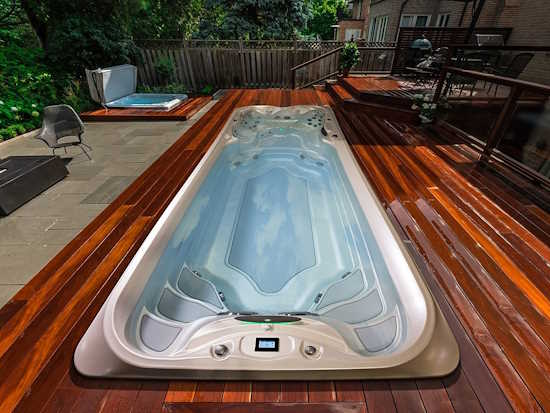
For the ultimate in space and luxury, a large hot tub or swim spas can accommodate seven or more people. Whether you love to entertain or you prefer a sprawling, spa-like experience, a large hot tub offers plenty of space to move and a variety of seating options. While they’re the costliest to install and operate, they’re undeniably the most luxurious choice, often coming with a plethora of features to enhance your hot tub experience.
Conclusion
Selecting the right size hot tub is more than just a matter of fit; it’s about crafting an environment that aligns with your needs, preferences, and practicality. By considering space availability, the number of users, and how often you’ll be hitting the jets, you’re one step closer to personal hot tub bliss.
Your hot tub is going to be a part of your life for years to come, offering relaxation, relief, and perhaps a bit of social cheer. It’s worth taking the time to size it up correctly. Remember, it’s not about getting the biggest or the smallest—it’s about getting the one that’s just right for you.
We hope this guide has helped grow your understanding of hot tub sizing and has warmed you up to making an informed choice. Happy soaking!
Frequently Asked Questions (FAQs)
Q: How often should I change the water in my hot tub?
A: The frequency of water changes in your hot tub depends on usage and size, but a general rule is every 3 to 4 months. However, if you use your hot tub more frequently, you might need to change the water more often to maintain water quality.
Q: Can I install a hot tub on my deck?
A: Yes, you can install a hot tub on your deck, but it’s essential to ensure the structure can support the weight. Hot tubs are heavy and become even heavier when filled with water and occupied by users. Consulting with a professional to assess your deck’s suitability is a wise step. A sturdy foundation is essential. Other items to consider would be low hanging branches, fence gate, and other overhead obstacles like the edge of the roof.
Q: Is it expensive to run a hot tub?
A: The cost to run a standard hot tub varies based on its size, frequency of use, energy efficiency, and local utility rates. Medium and large hot tubs generally cost more to heat and maintain, but choosing a hot tub with good insulation and an efficient heater can help minimize these expenses.
Q: Do I need a permit to install a hot tub?
A: Permit requirements vary by location, so it’s important to check with your local building department or municipality. Some areas may require a permit for installation, especially if electrical work is involved or if the hot tub is placed on a deck or an elevated structure.
Q: How can I make my hot tub more energy-efficient?
A: To improve energy efficiency, look for hot tubs with high-quality insulation, a cover with cover lifter that fits snugly, and an efficient heating system. Additionally, minimizing the temperature when the hot tub is not in use and checking for and fixing any leaks promptly can help reduce energy costs.
Q: Can I customize the features of my hot tub?
A: Many hot tub manufacturers offer customization options, including choices in jets, lighting, seating configurations, and entertainment systems. Discussing your preferences with a dealer can help you find a hot tub that meets your specific desires and needs.
